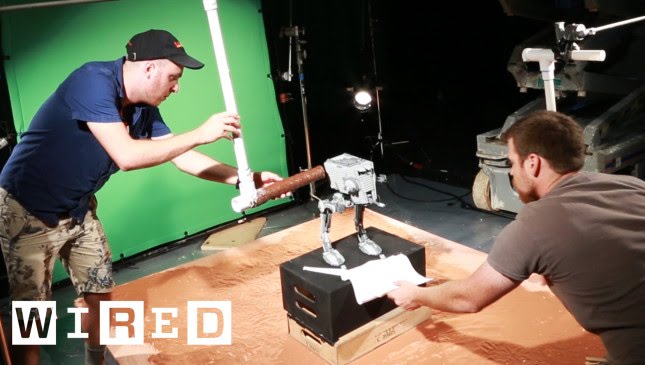Drawing a Portrait: Insights from TM Dave
Summary
TM Dave is an artist who shares insights into drawing a portrait in 11 levels of increasing complexity, emphasizing the importance of careful observation and patience. The text discusses the importance of observing details such as the placement of the eyes and nose and understanding facial structures. The writer highlights the significance of light and shadow, hues, and saturation, urging readers to explore and be open to the artistic process.
Table of Contents
- Solar head
- Identifying features
- Understanding volumes and proportions
- Adding planes to create a 3D structure
- Block-in
- Contour
- Light and shadow
- Highlights and accents
- Gradients and value
- Flesh tone
- Color and skin tones
Introduction
Drawing a portrait requires a keen sense of observation and patience, and the process can sometimes feel challenging to even the most experienced artists. For beginners, it can be a daunting task, but with practice, it becomes easier. TM Dave has shared some valuable insights into the process, breaking it down into 11 levels of increasing complexity. Whether you’re new to drawing or an experienced artist, these insights can be helpful in enhancing your portrait drawing skills.
Q&A
Solar Head
What is the solar head, and why is it essential to the portrait drawing process?
The solar head is the first level in the portrait drawing process, which involves drawing a circle with two eyes and a mouth. It’s a simple structure and helps an artist map out the basic guidelines for the face. It’s important because it establishes the foundation for more complex features later on.
Identifying features
What are the identifying features in the portrait drawing process?
Identifying features are the second level in the portrait drawing process, and they refer to facial characteristics that help distinguish one person from another. These features can include the shape of the eyebrows, cheekbones, jawline, and mouth. Using language to describe these features can help an artist better understand and add diversity to the drawing.
Understanding volumes and proportions
How do facial structures help an artist understand volumes and proportions in a portrait?
Facial structures, such as the circle of the base of the skull and its connection to the jawbone, provide a basic understanding of facial volumes and proportions. Observing these structures helps an artist develop a sense of depth and dimension in the face, leading to a more realistic portrait.
Adding planes to create a 3D structure
What are planes in a portrait drawing, and how do they contribute to the 3D structure of the face?
Planes refer to the individual surfaces of the face, such as the forehead, nose, and cheekbones. Adding planes to the portrait drawing helps create a more three-dimensional structure and gives the drawing depth and dimension.
Block-in
What is block-in, and how does it serve as a placeholder in the portrait drawing process?
Block-in refers to the use of straight lines and angles to create a map of the face that serves as a placeholder for future details. It helps an artist determine the placement of the features and the overall shape and structure of the face.
Contour
How does contour contribute to a portrait drawing, and what should an artist focus on when creating contours?
Contour refers to the outside edge of the face and its features. It contributes to the definition and shape of the face, creating a more realistic portrait. When creating contours, an artist should focus on the edges, angles, and curves that define the features.
Light and shadow
Why is light and shadow important in a portrait drawing process, and how does it contribute to the overall effect?
Light and shadow play a critical role in creating depth and dimension in a portrait. Understanding the way light travels across the face helps an artist create the illusion of volume and space. By creating shadows and highlights, an artist can add realism and drama to the portrait.
Highlights and accents
What are highlights and accents in a portrait drawing, and how do they enhance the overall effect?
Highlights are the areas in a portrait where light hits the face most directly, creating brightness and luminosity. Accents are the smaller details that enhance and add nuance to the portrait. Together, they create a sense of realism and drama, contributing to a powerful and evocative portrait.
Gradients and value
What are gradients in a portrait drawing, and why are they important?
Gradients refer to the subtle changes in tone and color across the face. They’re essential in creating depth and realism, giving the portrait a sense of texture and dimension. By understanding gradients and values, an artist can create a seamless transition from light to shadow, creating a more lifelike image.
Flesh tone
Why is establishing the flesh tone important, and how does an artist determine the right color?
Establishing the flesh tone is crucial in creating a realistic portrait. An artist needs to understand the hue, value, and saturation of the colors used in the portrait. Determining the average skin tone is a good starting point, followed by looking for additional nuances such as ruddiness or pinkness.
Color and skin tones
How does color relate to skin tones, and what are some common mistakes artists make in using colors in a portrait?
Colors have different hues and saturations, and skin tones are no exception. In drawing a portrait, an artist needs to be mindful of how light travels through the skin and how this affects the colors we see. Some artists make the mistake of using colors that are too dark, which can detract from the overall effect of the portrait. It’s important to experiment with colors and explore the artistic process, allowing room for discovery and exploration.
Conclusion
Drawing a portrait requires patience, attention to detail, and a deep understanding of facial structures, light and shadow, and color. TM Dave’s insights into the 11 levels of increasing complexity in drawing a portrait offer valuable tips and techniques for artists of all levels. Whether you’re new to drawing or looking to refine your skills, these insights can help you create powerful and evocative portraits that elicit emotions and inspire connective thoughts.







